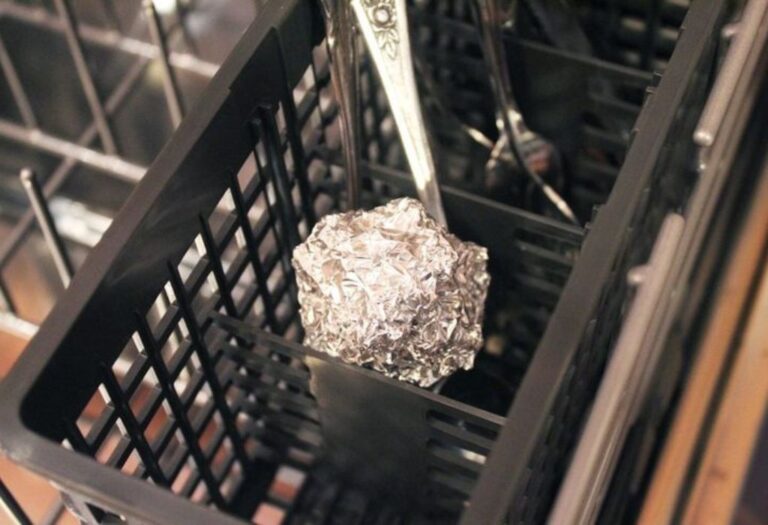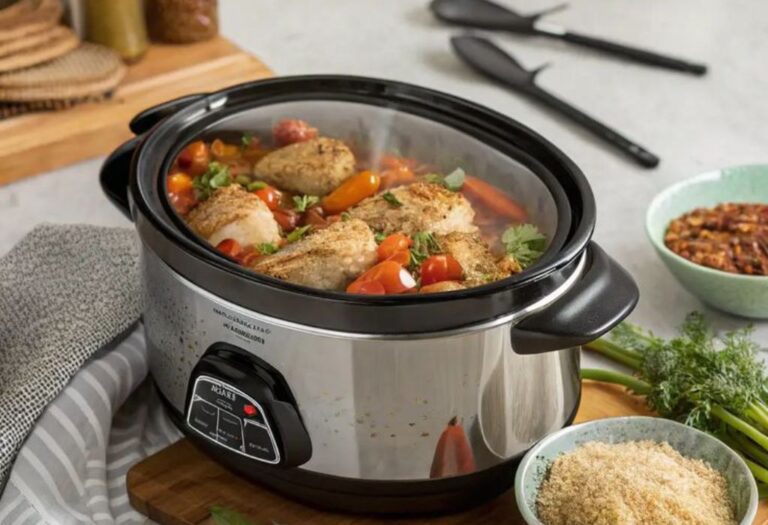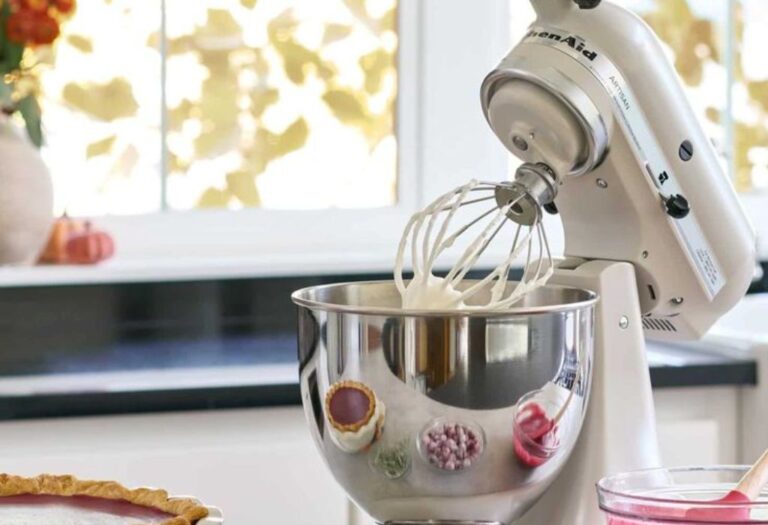A new ceramic pan often shines with promise, delivering flawless nonstick results from the very first meal. Yet within months, many cooks find food clinging stubbornly to the surface and wonder what went wrong.
This common frustration sparks curiosity. Can a simple kitchen technique restore that smooth, nonstick glide and keep ceramic cookware working like new?
The answer lies in seasoning. Unlike cast iron, ceramic does not naturally build a protective patina, but applying the right oil layer can dramatically improve performance and extend longevity.
Research shows that most ceramic cookware begins to lose nonstick effectiveness within one to two years if not maintained properly (Bob’s Red Mill). This early decline leads to frequent replacements and wasted money.
Meanwhile, the global cookware market continues to grow, projected to reach 44.35 billion USD by 2032 as consumers invest in healthier, non-toxic options (Medium). With so many households choosing ceramic, learning how to season it properly is more relevant than ever.
The benefit is clear. A well-seasoned ceramic pan not only prevents sticking but also reduces the need for excess oil, supports healthier cooking, and extends the cookware’s lifespan.
What Does Seasoning Mean for Ceramic Cookware?
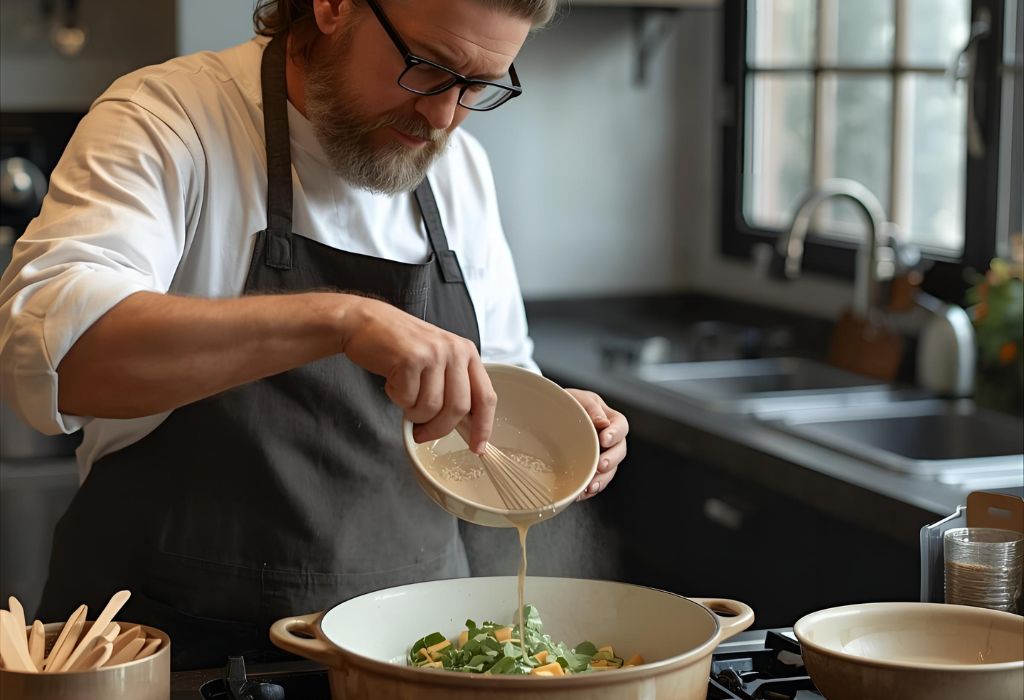
Seasoning ceramic cookware is often misunderstood. Many people think of cast iron when the word seasoning is mentioned, but the process serves a different purpose with ceramic.
Instead of building a natural patina, seasoning ceramic involves adding a thin polymerized oil layer over the factory coating. This layer enhances nonstick performance and fills microscopic pores in the surface.
Ceramic cookware typically features a metal base such as aluminum or stainless steel with a silica-based sol-gel coating. While this coating provides natural slickness, it can lose efficiency over time.
Seasoning helps prolong durability, giving the pan renewed life and preventing food from sticking. It is a simple yet effective method to maintain the glossy finish that attracts so many home cooks.
What is ceramic cookware made of?
It usually has a metal core coated with a silica-based ceramic layer.
What does seasoning mean for ceramic cookware?
It means applying a thin layer of oil, then heating it to create a polymerized film on the surface.
Is seasoning necessary for all ceramic pans?
Not always, but it improves performance and extends lifespan for most cookware.
How is seasoning different from cast iron seasoning?
Cast iron develops a natural patina, while ceramic relies on a pre-applied coating reinforced with oil.
Does seasoning damage the coating?
No, when done correctly on medium heat, it helps protect and revitalize the surface.
Why Ceramic Cookware Loses Nonstick and How Seasoning Helps
Ceramic cookware is valued for its smooth surface and natural nonstick ability, but that performance often fades over time. The coating gradually degrades as it faces daily cooking, cleaning, and exposure to heat.
Residue from oils, sauces, and proteins can settle into the surface, creating a sticky film. As the slickness disappears, food begins to cling, and cleaning becomes more difficult.
Unlike traditional PTFE coatings, ceramic relies on a silica-based sol-gel finish that is more brittle under stress. Once scratches or micro-cracks form, the surface becomes increasingly vulnerable.
Seasoning provides a practical solution. A thin oil layer heated past its smoke point bonds to the ceramic coating, creating a protective film that restores the nonstick effect.
This process also reduces the need for extra cooking oil, promotes healthier meals, and prevents frustration at the stove. It is not permanent, but it significantly slows down wear and improves durability.
Why does food stick to ceramic cookware over time?
Residue buildup and coating degradation reduce the natural nonstick properties.
Can seasoning reverse sticking problems?
Yes. A polymerized oil layer restores smoothness and makes food release easier.
What oils are best for seasoning ceramic cookware?
High smoke-point oils such as avocado, grapeseed, or canola oil are ideal.
How often should ceramic pans be seasoned?
Every few months or whenever sticking becomes noticeable.
Is seasoning a permanent solution?
No. It temporarily improves performance but cannot replace a worn-out coating.
Step-by-Step: How to Season Ceramic Cookware

Seasoning ceramic cookware is a simple process, but following each step carefully ensures the best results. The goal is to create a thin, polymerized oil layer that enhances nonstick performance without damaging the coating.
The process begins with proper cleaning. The pan must be washed gently with warm water, mild soap, and a soft sponge to remove food residue and oils.
Once clean, a thin layer of oil is applied. High smoke-point oils such as avocado, grapeseed, or canola are best because they resist burning and form a durable film.
Next, the cookware is heated on medium until the oil begins to smoke lightly. This reaction bonds the oil molecules to the ceramic surface, creating the protective coating.
Finally, the pan is cooled and wiped with a soft cloth to remove excess oil. The surface should appear smooth and slightly glossy, ready for use.
How should ceramic cookware be cleaned before seasoning?
Wash it with mild soap and a soft sponge to remove all residue.
Which oils are best for seasoning ceramic cookware?
Use avocado, grapeseed, or canola oil because of their high smoke points.
What heat level should be used?
Medium heat works best to polymerize the oil without damaging the ceramic coating.
Can the oven be used instead of the stove?
Yes. Place the pan in a 300°F oven for about 10 minutes after oiling.
How do you know the seasoning is complete?
When the oil lightly smokes and the surface looks glossy, the process is done.
Maintenance Tips to Extend Nonstick After Seasoning
Seasoning is only the first step in protecting ceramic cookware. Daily habits and proper care are what truly extend the lifespan of the nonstick surface.
Utensil choice is one of the most important factors. Wooden, silicone, or nylon tools are gentle and prevent scratches, while metal utensils quickly damage the coating.
Cooking temperature also matters. Keeping the heat on low to medium prevents the ceramic layer from becoming brittle and losing its nonstick properties.
Cleaning should always be gentle. Hand washing with a soft sponge and mild soap preserves the protective layer, while steel wool and abrasive pads strip it away.
Proper storage ensures the coating remains intact. Using pan protectors, cloths, or hanging racks reduces friction that causes chips and scratches.
Cooking sprays and chemical cleaners should also be avoided. They can leave residues that build up over time and weaken the coating.
Which utensils are safe for ceramic cookware?
Wooden, silicone, or nylon utensils are best to prevent scratches.
What heat setting preserves the nonstick surface?
Low to medium heat protects the coating and keeps it durable.
How should ceramic pans be cleaned daily?
Use warm water, mild soap, and a soft sponge for safe cleaning.
What is the safest way to store ceramic cookware?
Stack with cloth or pan protectors, or hang the pans to avoid contact.
Do cooking sprays harm ceramic coatings?
Yes. They leave sticky residues that reduce nonstick performance over time.
Common Misconceptions & When Not to Season
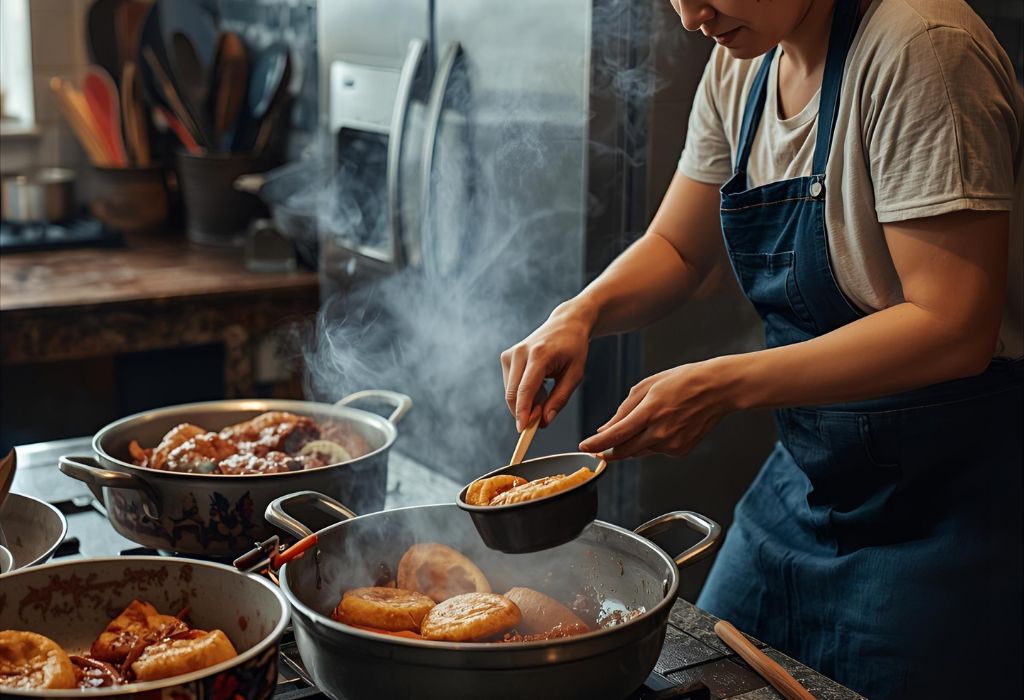
Many people believe seasoning ceramic cookware is identical to seasoning cast iron. This is a misconception because ceramic pans already have a factory-applied nonstick coating.
Another common belief is that seasoning is always required. In reality, many ceramic pans work well out of the box and only need seasoning when food begins to stick.
Some assume any oil will work for seasoning. Low smoke-point oils such as olive oil burn too quickly and leave sticky residues instead of forming a protective layer.
Others think seasoning can repair severely damaged or worn coatings. Once the ceramic layer is cracked or chipped, no amount of oil can restore it.
It is also important to remember manufacturer guidance. Some brands specifically advise against seasoning, as their coatings are designed to function without it.
Is seasoning always necessary for ceramic cookware?
No. Many ceramic pans perform well without it, especially when new.
Can seasoning crack or damage the coating?
Only if overheated. Done correctly at medium heat, it is safe.
Does olive oil work for seasoning ceramic pans?
No. Its low smoke point causes burning and sticky residue.
Can seasoning fix a heavily scratched or chipped pan?
No. Once the coating is damaged, replacement is the only solution.
Should all brands of ceramic cookware be seasoned?
Not always. Follow manufacturer instructions before seasoning.
Conclusion
Ceramic cookware has become a popular choice for health-conscious households, offering a non-toxic surface and a sleek design that looks beautiful in any kitchen. Yet, like all cookware, its performance depends heavily on how it is cared for.
The natural nonstick qualities of ceramic fade with daily use, leading many people to feel disappointed when food begins to cling.
Seasoning provides a valuable solution. By applying a thin layer of high smoke-point oil and heating it until it bonds with the ceramic surface, cookware can regain its smooth release and extend its lifespan.
This process is not about transforming ceramic into cast iron, but about reinforcing its factory coating with an extra layer of protection.
The benefits go beyond convenience. A properly seasoned pan reduces the need for excess cooking oil, making meals lighter and healthier. It also saves money by delaying the need for frequent replacements, a common issue with lower-quality ceramic pans that wear out quickly.
Still, seasoning alone is not enough. Long-lasting results come from consistent care: cooking at medium heat, choosing utensils that do not scratch, washing by hand with soft sponges, and storing pans so that surfaces never rub against each other. These small habits prevent unnecessary wear and make the seasoning more effective.
The question of how to season ceramic cookware is therefore part of a bigger picture. Seasoning is a powerful tool, but it works best as part of a complete cookware care routine. By combining proper seasoning with mindful use and maintenance, ceramic cookware can remain nonstick, safe, and reliable for years.
For home cooks, the message is simple. Pay attention to how cookware is treated each day, take the time to season when needed, and the reward will be healthier meals, easier cleanup, and a kitchen investment that truly lasts.
I’m Emma J. Caldwell, the founder, lead writer, and home-cooking enthusiast behind KitchenGuideCo.com. With a background in culinary arts and over a decade of cooking experience in both professional and personal kitchens, I created this platform to demystify recipes, offer smart kitchen gadget reviews, and guide readers through meal prep with confidence and clarity.

